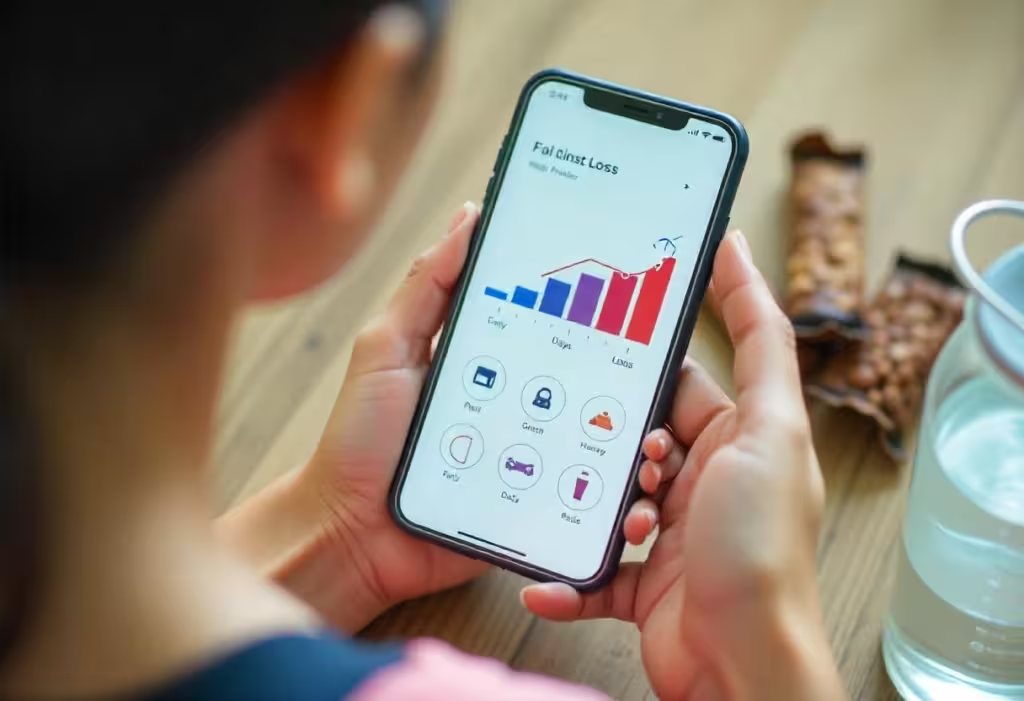How Intermittent Fasting for Weight Loss Can Help You Shed Pounds

Intermittent fasting for weight loss is a popular and effective method to shed pounds while improving overall health. By cycling between periods of eating and fasting, your body learns to burn fat more efficiently, leading to weight loss without drastic calorie restriction. This approach not only helps with fat loss but can also improve metabolism and increase energy levels. Whether you’re just starting out or looking to fine-tune your fasting routine, understanding the benefits and techniques of intermittent fasting will help you reach your goals.
Unlocking the Benefits of Intermittent Fasting for Weight Loss
Unraveling the Secrets of Intermittent Fasting for Weight Loss
Intermittent fasting for weight loss is all the rage right now. People are buzzing about it, and for good reason! This eating strategy involves alternating between periods of fasting and eating, and it’s not only about dropping those pesky pounds. Trust me, it’s a gateway to a bunch of benefits that extend beyond just weight loss. Let’s dive into the captivating world of intermittent fasting and see how it can help you maintain a healthy weight for the long haul.
The Science Behind Intermittent Fasting
So, what’s the science behind intermittent fasting for weight loss? At its core, this approach takes a clever jab at your metabolism and hormones. When you decide to fast, your body switches gears—it goes from using glucose as its main fuel to targeting stored fat for energy. This whole process is called lipolysis, and over time? You could see a significant drop in body fat.
On top of that, intermittent fasting plays a nifty role in tweaking hormones like insulin, growth hormone, and norepinephrine. These shifts can amp up fat burning while keeping your hunger at bay. Pretty neat, right?
Intermittent Fasting Protocols for Weight Loss
Now, there’s no one magical way to do intermittent fasting for weight loss. There are several protocols to choose from, and each has its own perks. Check these out:
- The 16/8 Method: Fast for 16 hours. Basically, you’ll have an 8-hour window to eat. For example, if you stop munching at 8 PM, you won’t touch food again until 12 PM the next day.
- The 5:2 Diet: Here, you eat normally for five days and then restrict your calorie intake to 500-600 calories on the other two days. Talk about a balance!
- Alternate-Day Fasting: This one’s all about switching between eating days and fasting days where you barely consume any calories.
The Benefits of Intermittent Fasting for Weight Loss
Let’s chat about those benefits! Sure, intermittent fasting is amazing for weight loss, but it’s got a treasure trove of other advantages:
- Improved Insulin Sensitivity: It’s been shown to enhance insulin sensitivity, helping to keep blood sugar levels stable and guard against type 2 diabetes.
- Reduced Inflammation: Fasting can be like a soothing balm for inflammation, easing symptoms of chronic conditions and lowering the risk of some diseases.
- Increased Human Growth Hormone (HGH) Production: Fasting can ramp up HGH levels, which is awesome for muscle growth, fat loss, and smooth metabolic functioning.
- Gut Health Benefits: Intermittent fasting may promote gut health, lowering inflammation and boosting the growth of good gut bacteria.
Implementing Intermittent Fasting Effectively
If you’re ready to kick off an intermittent fasting journey, I’ve got some tips that might help:
- Pick a fasting method that jives with your lifestyle—don’t force it!
- Ease into your fasting periods. A sudden change might jazz up your metabolism, but it could also throw your body for a loop.
- Hydrate, hydrate, hydrate! Drink plenty of water, herbal tea, or black coffee during your fasting hours.
- Focus on nutrient-dense foods during your eating windows to support your overall health. No junk on the buffet!
- Listen to your body. No shame in adjusting your fasting schedule to keep it sustainable.
Remember, when it comes to shedding pounds through intermittent fasting, consistency is your best buddy. With patience and dedication, you’ll unlock its incredible transformational power.
“Hit the ground running with our premium running shoes—experience unmatched comfort, support, and performance with every step you take!”
The Science Behind Intermittent Fasting for Weight Loss and Metabolism
The Metabolic Benefits of Intermittent Fasting
Now, intermittent fasting for weight loss doesn’t just make the scale tip; it’s got some intriguing effects on metabolism too. This trendy eating method can dramatically influence how your body processes energy.
Insulin Regulation and Fat Burning
One significant way intermittent fasting helps with weight loss is by finetuning insulin levels. Normally, when we eat, our body releases insulin to manage blood sugar and stash nutrients. But during fasting, insulin levels drop, allowing your body to shift into a fabulous fat-burning state known as ketosis.
In this state, your body leans on stored fat for energy, a far cry from gobbling up glucose from recently eaten foods. This switch can help you shed body fat without desperately counting every single calorie.
Cellular Repair and Autophagy
Another fascinating aspect? Intermittent fasting is linked to autophagy—the body’s way of tidying up damaged cells. When you fast, your body reallocates energy normally used for digestion to repair and rejuvenate cells.
This tidy-up can lower inflammation, enhance insulin sensitivity, and improve your overall metabolism. It’s like a health boost for your insides!
“Unlock the secrets to rapid weight loss with our comprehensive guide—transform your body and achieve your goals faster than ever before!”
Hormonal Regulation and Metabolism
Intermittent fasting also influences several hormones pivotal for metabolism. Research indicates it can increase growth hormone production, aiding in preserving lean muscle while ushering in fat loss.
Plus, it lowers levels of ghrelin, the hunger hormone. Less ghrelin? Yes, please! This shift can keep those hunger pangs at bay, making you less tempted to overindulge.
Gut Health and Microbiome Diversity
Your gut health? It can score a win from intermittent fasting too! Fasting gives your gut a break from all that food, allowing it to reset and restore a better balance of bacteria.
A healthy gut means improved nutrient absorption, less inflammation, and a boost to your metabolism. Who knew your tummy could play such a role in your weight loss journey?
Intermittent Fasting Protocols
When it comes to intermittent fasting, there are plenty of ways to do it right:
- 16:8 Fasting: You fast for 16 hours and eat during an 8-hour window.
- 24-Hour Fasts: Fast for a complete day—this usually happens once or twice a week.
- Alternate-Day Fasting: Switch between days of eating normally and days where you fast.
- 5:2 Diet: Eat normally for five days, then keep calories down to 500-600 for two days.
Keep in mind, what works for one person might not suit another. Chatting with a healthcare pro or registered dietitian can help you find your path.

Customizing Intermittent Fasting for Weight Loss Schedules for Optimal Results
Crafting a Personalized Intermittent Fasting Plan
Intermittent fasting for weight loss is a fantastic option, but don’t fall for the “one-size-fits-all” trap. It’s vital to tailor your fasting schedule based on your personal needs, goals, and lifestyle.
Determining Your Fasting Window
The heart of your intermittent fasting plan is the fasting window—when you don’t eat. Here are some popular windows used:
- 16:8 Method: Fast for 16 hours and eat in an 8-hour window.
- 20:4 Method: Fast for 20 hours, squeezing in 4-hours to eat.
- 24-Hour Fasts: Go without food for a full day, usually once or twice per week.
The fasting window that works best will depend on your age, activity level, and metabolic health. Try different styles and see how your body reacts to find your perfect fit.
Timing Your Fasts
The timing of your fast can also play a huge role in your success. Think about your daily routine—work, social life, and other commitments. Here are some tactics:
- Overnight Fasting: Skip breakfast and extend your overnight fast. Easy peasy!
- Lunch-to-Lunch Fasting: Fast from your last meal until lunch the next day—super handy for busy lives.
- Dinner-to-Dinner Fasting: Fill the gap from one dinner to the next. Longer fasting window, but without drastically altering meal times.
Flexibility
Flexibility is crucial with intermittent fasting. Keep your lifestyle in mind and allow for adaptations:
- Adjusting Fasting Windows: Try out different fasting windows until you find your sweet spot.
- Incorporating “Feast Days”: Set aside occasional days where you can relax your fasting rules to keep your motivation high.
- Adapting During Special Occasions: Be kind to yourself during holidays or events and adjust your plan.
Monitoring and Adjusting
Regularly check in on how your intermittent fasting plan is working for you. Track your progress and be ready to make changes as needed:
- Tracking Metrics: Keep an eye on weight, body composition, energy levels, and general health.
- Seeking Professional Guidance: A healthcare pro or registered dietitian can help boost your journey.
- Iterating and Adapting: Make changes to your fasting schedule as things evolve.
Customizing your intermittent fasting plan is an adventure, not a destination. Pay attention to what your body needs to unleash the full potential of this powerful approach!
“Immerse yourself in your favorite tunes with our high-quality headphones—enjoy crystal-clear sound and ultimate comfort for every listening experience!”
Navigating Common Challenges and Misconceptions of Intermittent Fasting for Weight Loss
Common Myths About Intermittent Fasting
Intermittent fasting for weight loss has taken the spotlight recently, but it comes with its fair share of myths. One of the biggest misunderstandings is the idea that it’s an extreme, unsustainable diet. Spoiler alert: intermittent fasting is flexible and can easily fit into different lifestyles. It’s all about finding what works for you!
Another common myth is that intermittent fasting is only for certain body types or health conditions. Nope! Research shows it can benefit a wide variety of people, regardless of where they’re starting from. The key is finding an approach that aligns with your goals.
“Discover the best weight loss programs tailored to your health goals—transform your lifestyle and achieve lasting results with expert guidance!”
Addressing Common Challenges with Intermittent Fasting
While intermittent fasting can be a game-changer for your health, it’s not without hurdles. One of the biggest challenges? Hunger and those pesky cravings during fasting periods. If you’re used to eating small meals throughout the day, this can be tough!
To tackle this, stay hydrated, keep moving with light exercises, and find ways to occupy your mind during fasting. Some folks find sipping black coffee, herbal tea, or bone broth can help curb hunger and keep them feeling satiated.
Another challenge is maintaining steady energy levels without crashing. This is especially a head-scratcher for those with demanding jobs or active lifestyles. The answer? Focus on a balanced diet during eating windows, and be mindful of what your body needs.
Navigating the Transition to Intermittent Fasting
Shifting to intermittent fasting? It takes time for your mind and body to adjust. So, give yourself a break! Start slow and gradually extend your fasting periods—this helps minimize discomfort like headaches or irritability.
It’s also crucial to pay attention to your body’s hunger cues. If your body is shouting for a snack, don’t ignore it. Balance is key!
And don’t forget—your eating windows should include balanced, nutrient-dense foods to fuel your body properly.
Individualizing Your Intermittent Fasting Approach
The beauty of intermittent fasting lies in its adaptability. What works for someone else might not hit the spot for you, and that’s completely fine! Consider your current fitness, activity level, and personal preferences when designing your plan.
For instance, an active person might thrive on a more flexible fasting schedule, while someone more sedentary may need a structured approach. Be prepared to experiment and discover what fits your groove.
It could involve playing around with fasting durations, meal timings, or even blending it with other dietary strategies like low-carb or Mediterranean diets.
Integrating Intermittent Fasting for Weight Loss into a Balanced Lifestyle
Unlocking the Benefits of Intermittent Fasting
Intermittent fasting for weight loss is growing as a powerful tool for overall health and vitality. It’s all about cycling between fasting and eating periods to maximize the benefits. By weaving intermittent fasting into a balanced lifestyle, you can supercharge your wellness journey.
Understanding the Science Behind Intermittent Fasting
Intermittent fasting works by riding the wave of natural metabolic processes. During fasting, your body flips into ketosis, pulling energy from stored fat instead of sugar. That shift can bring about a host of positive results, like lowering inflammation, boosting insulin sensitivity, and enhancing cell repair.
Balancing Intermittent Fasting with a Healthy Lifestyle
While using intermittent fasting for weight loss is impactful, integrating it into a comprehensive lifestyle is crucial. Keep your diet well-rounded, commit to regular exercise, and manage stress—all are vital for making the most out of intermittent fasting.
Developing a Sustainable Fasting Routine
Embedding intermittent fasting in your daily repertoire requires some plotting and probing. Explore different protocols like the 16:8 or 5:2 methods to find the groove that suits your vibe without breaking a sweat.
Navigating Potential Challenges
Transitioning to intermittent fasting can present its share of bumps, like hunger issues, adjusting to new eating patterns, or dealing with side effects. Stay in tune with your body and reach out to healthcare professionals or seasoned practitioners as needed.
Optimizing Intermittent Fasting for Weight Loss
Intermittent fasting isn’t just effective for shedding pounds, but it can help create a calorie deficit while allowing your body to tap into stored fat. That said, it’s about balancing your caloric intake with nutrient-licked foods to nourish your body adequately.
Navigating the Plateau
We all hit plateaus sometimes, right? If it feels like the scale isn’t budging despite sticking to your intermittent fasting plan, it’s time for a check-up. Reassess your fasting approach, tweak your caloric intake, and think about other aspects like your sleep, stress, and physical activity levels to break through.
Exercise for Optimal Results
Pairing intermittent fasting with regular movement can amplify your weight loss results. A blend of cardiovascular exercises, strength training, and mindful movements not only boosts metabolism but helps build lean muscle and heightens fitness levels.
Maintaining Long-Term Success
Sustaining weight loss and health through intermittent fasting is about making a long-term commitment to this method. Be prepared to embrace patience and flexibility, adapting your fasting plan as necessary. Regular check-ins with professionals, connecting with a community for encouragement, and focusing on overall well-being will amp up your chances of sustaining positive outcomes.

New Insights on Intermittent Fasting for Weight Loss
Emerging Research on Intermittent Fasting
Recent studies have shone a new light on intermittent fasting and its role in weight loss, revealing some exciting and unexpected benefits.
- Impact on Brain Health: Research suggests intermittent fasting may also enhance brain function by improving neuroplasticity. Fasting periods can enhance the production of brain-derived neurotrophic factor (BDNF), a protein crucial for learning and memory
- Hormonal Adjustments: Studies indicate that intermittent fasting not only lowers insulin levels but significantly increases human growth hormone (HGH) levels by up to 5-fold. This hormone aids in fat loss, muscle gain, and overall metabolic health.
- Enhancement of Metabolic Flexibility: Intermittent fasting has been shown to improve metabolic flexibility, meaning your body becomes better at switching between burning carbs and fats for energy.
Common Questions About Intermittent Fasting for Weight Loss
As more people jump on the intermittent fasting bandwagon, it’s common to have questions. Here are some frequently asked questions:
- Can I drink coffee during intermittent fasting? Absolutely! Black coffee is a great choice as it has negligible calories and may even enhance fat oxidation. Just hold the sugar and cream!
- What if I feel weak or dizzy during a fast? If you feel off, it’s essential to listen to your body. Make sure you’re well-hydrated and consider speaking with a healthcare professional if symptoms persist.
- Does intermittent fasting lead to muscle loss? When properly done, intermittent fasting can help preserve muscle mass due to the increase in HGH. Focus on resistance training and adequate protein intake during your eating windows!
Nutritional Aspects of Intermittent Fasting
What you eat during your eating window matters too. Here are key points to keep in mind:
- Prioritize Whole Foods: Focus on nutrient-dense foods like leafy greens, lean proteins, healthy fats, and whole grains. They will keep you fuller for longer and provide essential nutrients needed for wellness.
- Hydration is Key: Drink plenty of water and consider electrolyte-rich beverages to prevent dehydration during fasting periods.
- Don’t Overeat: It may be tempting to indulge during your eating window, but moderation is crucial for effective weight loss. Listen to your body’s hunger cues!
Social Aspects and Intermittent Fasting
Intermittent fasting can be adapted to fit into your social life. Here’s how:
- Plan Ahead: When you know you’ll be out with friends, try timing your fasting window to coincide with meals. It’s totally okay to shift your windows occasionally!
- Choose Flexible Protocols: The 16:8 method is typically more flexible as it allows for a wider eating window, convenient for social gatherings.
- Communicate: Let your friends and family know about your fasting plan so they can support you or even join in!
Monitoring Progress in Intermittent Fasting
To truly harness the benefits of intermittent fasting for weight loss, regular monitoring can help:
- Track Changes: Keep a journal of what you eat during your eating windows, noting how you feel and any progress towards your weight loss goals.
- Use Technology: There are numerous apps designed to help you track your fasting schedule and weight loss progress—these can be super motivating!
- Be Patient: It’s normal for weight fluctuations to occur. Focus on overall trends rather than day-to-day changes.
Conclusion on Intermittent Fasting for Weight Loss
Intermittent fasting for weight loss not only stands as a viable method for shedding pounds but also encompasses a myriad of additional benefits. From improving brain health and metabolic flexibility to enhancing hormonal balance, it’s evident that this approach can extend far beyond mere calorie restriction. Remember to consider your nutritional intake, hydration, and how you can integrate fasting into your lifestyle while maintaining a solid social life. With commitment and by tailoring your approach, you can unlock the full potential of intermittent fasting as a cornerstone of your health journey. So, give it a shot, and witness the transformations unfold!
For more information, explore our website. You can find answers to common questions in our FAQ section, learn more about us on our Home page, discover the range of services we offer in the What We Provide section, get in touch with us through the Contact page, and stay connected with us on our Socials.
Check out our new Calculators Toolkit!
You can now buy my E-Book on Discount for only $4 just reach out to me on Instagram! If you need personal help or a program, you can reach out to me on Instagram! as well!
Jane
Co-Founder GlobalAiCenter






